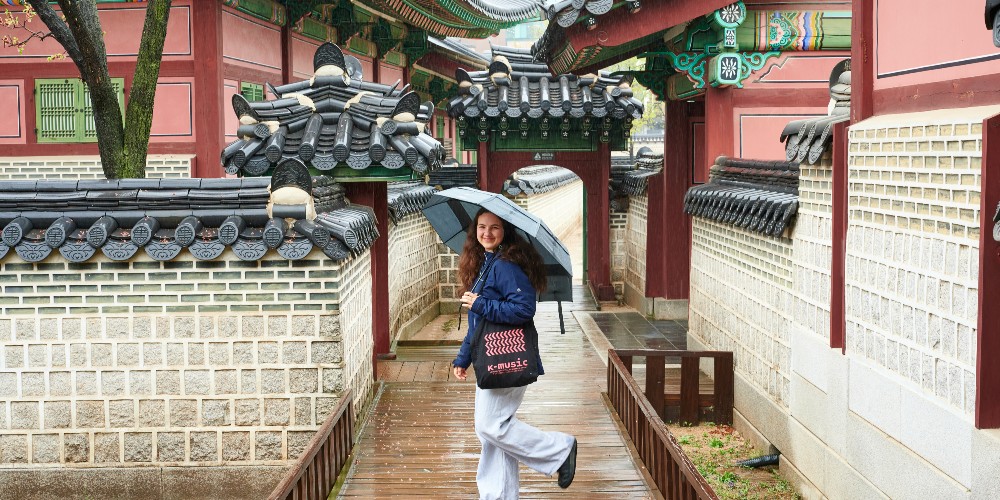A shared love of mountains, K-drama and kimchi drew Rudolf Abraham, his wife and 13 year old daughter to South Korea this April, and it delivered a spectacular adventure holiday and then some.

Changdeokgung Palace, Seoul, South Korea
Breaking with our usual Mediterranean habit, we wanted to go somewhere entirely new this spring and South Korea was somewhere we’d been desperate to visit for years for a whole slew of reasons, not least our shared passion for kimchi.

Changing guards, Gyongbokgung Palace, Seoul
See South Korea in cherry blossom season
Our trip began in the huge, fascinating, mind-blowing metropolis that is Seoul, early in cherry blossom season, as branches were turning to a mass of pinks and creams under a bright blue sky. Like many before us, our first stop was Gyongbokgung: the main royal palace of the Joseon Dynasty which ruled Korea from 1392 until 1910. Built at the end of the 14th century, it reveals itself in a succession of halls and pavilions decorated with brightly-painted wooden beams, ceilings and dragon-cornered roofs, all framed by broad, granite-paved courtyards, punctuated with lakes and
gardens. My advice is to join an English language tour to start with and then explore a little under your own steam. That’s certainly what we did, ending up by the main gate just in time to catch the changing of the palace guard.

Changdeokgung Palace, Seoul, South Korea
Over the next few days we visited the Changdeokgung palace with its hidden garden, and then the Jogyesa temple, known for its gold Buddhas and courtyard roofed with coloured lanterns and pierced by a 450 year old Chinese scholar tree. We also followed the Cheonggyecheon stream in the city centre where Koreans picnic beside waterfalls spilling down from street level. And the National Museum of Korea – genuinely superb – was on our hit list too.

PSY hands, Gangnam, Seoul
Of course, Gangnam was another unmissable for its shopping malls and a screen which plays Gangnam Style on repeat beside a giant sculpture of PSY’s hands. Then we delved into the food section of huge Gwangjang Market, taking our potato pancakes to sit outside the neo-futuristic façade of Dongdaemun Design Plaza, the work of Zaha Hadid.

Bukhansen National Park, Seoul, South Korea
Where locals love to hike in Seoul
Rising above the northern suburbs of Seoul, Bukhansan National Park is very easy to reach from the city centre and essentially a great sprawl of granite peaks and boulders, with well-marked trails meandering across forested slopes.
We’d set our sights on Baegundae, the park’s highest peak and a hiking trail which would take us from west to east in the space of a day. Hiking is enormously popular in Korea, so there was no doubt which bus stop we needed – we just followed the crowds of excited locals all headed in roughly the same direction.

Hiking Bukhansan National Park, Seoul
The trail to Baegundae is wonderful; steep in places, but not too difficult, and certainly not boring for kids. We passed through a mass of blossoms, and a stout no-nonsense gateway in the walls of Bukhansen fortress – built to protect the Joseon palaces of Seoul against northern attacks. Then it took us around two hours of rocky trails to reach another section of the fortress walls on a ridge below Baegundae itself. Above this point, the trail to the peak becomes steeper, with steps or shallow footholds cut into the rock, and steel cables which you’ll definitely want to hold onto.
It’s quite exposed in places, so more suited to confident hikers and slightly older kids – my daughter was fine with it (she’s fairly used to hiking steep trails), although we also passed a Korean couple with a baby in a child-carrier near the top, who seemed more than comfortable with the route.












